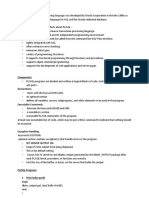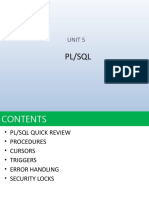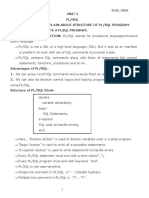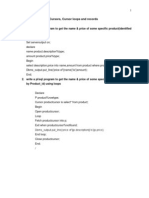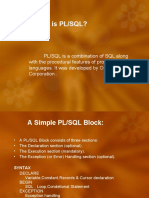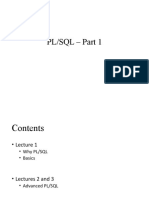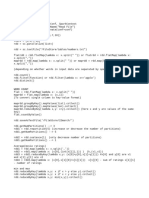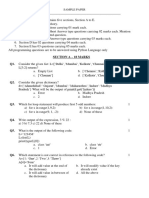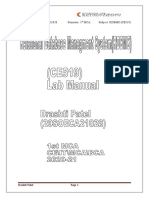0% found this document useful (0 votes)
46 views46 pagesPL/SQL Environment
The document provides an overview of PL/SQL, including its basic syntax, data types, control structures like IF statements and loops, as well as examples of procedures, functions, cursors, and triggers. It covers how to create and manipulate database objects, perform arithmetic operations, and handle exceptions. Additionally, it explains the advantages of using triggers in database management.
Uploaded by
23ag1a05i3Copyright
© © All Rights Reserved
We take content rights seriously. If you suspect this is your content, claim it here.
Available Formats
Download as PPT, PDF, TXT or read online on Scribd
0% found this document useful (0 votes)
46 views46 pagesPL/SQL Environment
The document provides an overview of PL/SQL, including its basic syntax, data types, control structures like IF statements and loops, as well as examples of procedures, functions, cursors, and triggers. It covers how to create and manipulate database objects, perform arithmetic operations, and handle exceptions. Additionally, it explains the advantages of using triggers in database management.
Uploaded by
23ag1a05i3Copyright
© © All Rights Reserved
We take content rights seriously. If you suspect this is your content, claim it here.
Available Formats
Download as PPT, PDF, TXT or read online on Scribd
/ 46
